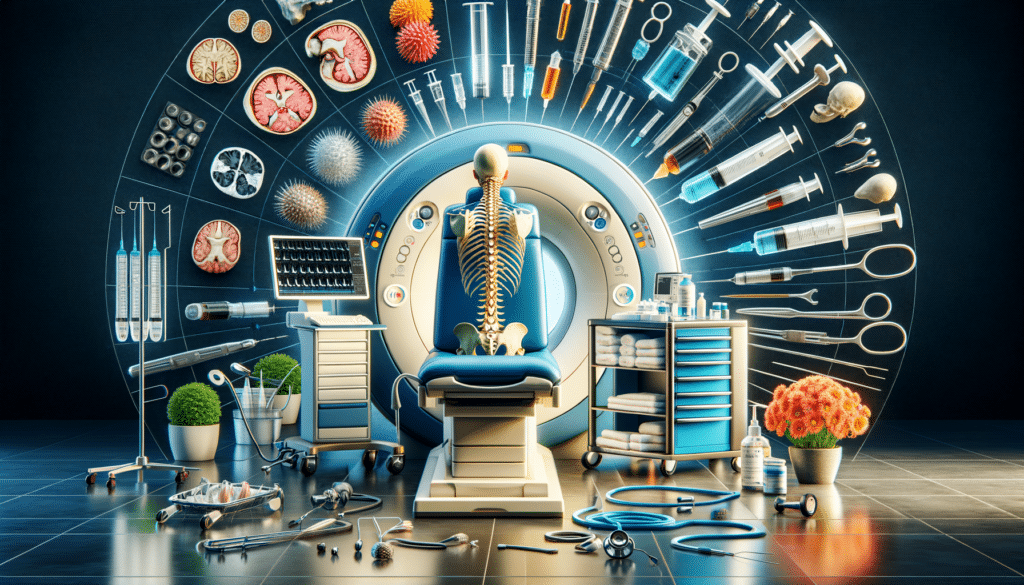Understanding Spinal Stenosis
Spinal stenosis is a condition characterized by the narrowing of spaces within the spine, which can lead to pressure on the spinal cord and nerves. This condition commonly occurs in the neck and lower back, areas known as cervical and lumbar stenosis, respectively. The narrowing is often due to age-related changes in the spine, such as the thickening of ligaments, bone spurs, and degeneration of intervertebral discs. Symptoms can vary but typically include pain, numbness, muscle weakness, and impaired mobility, which can significantly affect daily activities and quality of life.
Understanding the anatomy of the spine is crucial to grasping how spinal stenosis occurs. The spine is composed of vertebrae, intervertebral discs, and a complex network of nerves. When the space within the spinal canal or the openings between vertebrae become constricted, it can irritate or compress the nerves. This compression can lead to the symptoms associated with spinal stenosis. The condition often progresses slowly, and symptoms can worsen over time, making early diagnosis and management essential.
Non-Surgical Treatments and Therapies
For individuals diagnosed with spinal stenosis, non-surgical treatments are often the first line of defense. These treatments aim to alleviate symptoms and improve function without the need for invasive procedures. Physical therapy is a cornerstone of non-surgical management, focusing on exercises that strengthen the muscles supporting the spine, improve flexibility, and enhance balance. A physical therapist can tailor a program specific to the individual’s needs and limitations, helping to reduce pain and improve mobility.
In addition to physical therapy, medications can play a significant role in managing spinal stenosis. Non-steroidal anti-inflammatory drugs (NSAIDs) are commonly prescribed to reduce pain and inflammation. In some cases, corticosteroid injections may be recommended to provide more direct relief to inflamed areas around the nerves. It’s important for patients to work closely with their healthcare providers to determine the most appropriate medication regimen, considering potential side effects and interactions with other treatments.
Surgical Options for Spinal Stenosis
When non-surgical treatments fail to provide relief, or if the condition is severe, surgical intervention may be considered. Surgery aims to relieve pressure on the spinal cord or nerves by creating more space within the spinal canal. Several surgical procedures are available, each with specific indications and potential outcomes. Laminectomy, for example, involves removing part of the vertebrae to enlarge the spinal canal, while spinal fusion may be performed to stabilize the affected area.
Advancements in surgical techniques have led to minimally invasive options, which can offer benefits such as reduced recovery time and less postoperative pain. However, surgery is not without risks, and it’s essential for patients to discuss the potential benefits and drawbacks with their surgeon. Factors such as age, overall health, and the severity of symptoms will influence the decision-making process, ensuring that the chosen approach aligns with the patient’s goals and expectations.
Alternative and Complementary Therapies
In recent years, there has been growing interest in alternative and complementary therapies for managing spinal stenosis. These therapies can be used alongside conventional treatments to enhance overall well-being and symptom relief. Acupuncture, for instance, is a traditional Chinese medicine practice that involves inserting thin needles into specific points on the body. Some studies suggest that acupuncture may help reduce pain and improve function in individuals with spinal stenosis.
Chiropractic care is another popular alternative therapy, focusing on spinal manipulation to improve alignment and relieve pressure on nerves. While some patients report positive outcomes, it’s important to consult with a healthcare provider to ensure that chiropractic adjustments are safe and appropriate for their specific condition. Additionally, mind-body practices such as yoga and tai chi can promote relaxation, increase flexibility, and improve posture, contributing to better management of spinal stenosis symptoms.
Living with Spinal Stenosis: Lifestyle and Support
Living with spinal stenosis requires a comprehensive approach that includes lifestyle modifications and support systems. Maintaining a healthy weight is crucial, as excess body weight can exacerbate symptoms by placing additional strain on the spine. A balanced diet rich in anti-inflammatory foods, such as fruits, vegetables, and omega-3 fatty acids, can support overall health and reduce inflammation.
Staying active is essential, but it’s important to choose activities that are gentle on the spine. Low-impact exercises like swimming, walking, and cycling can help maintain fitness without aggravating symptoms. Additionally, practicing good posture and ergonomics can prevent further strain on the spine during daily activities. Support from family, friends, and healthcare professionals is invaluable, providing emotional encouragement and practical assistance in managing the condition.
In conclusion, spinal stenosis is a complex condition that requires a multifaceted approach to treatment and management. By understanding the available options and working closely with healthcare providers, individuals can find effective strategies to alleviate symptoms, improve function, and enhance their quality of life.





